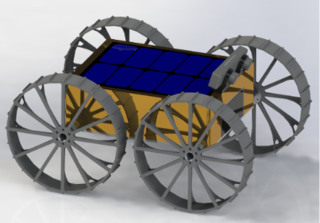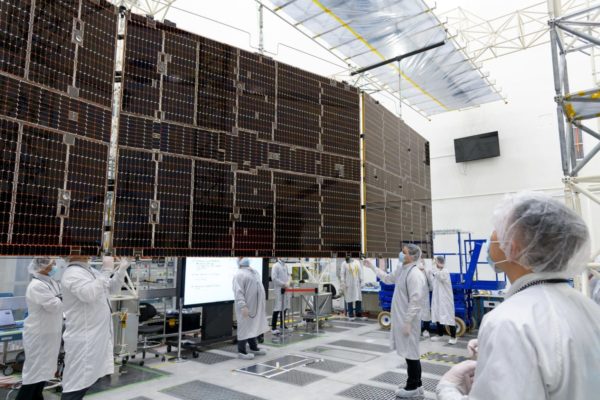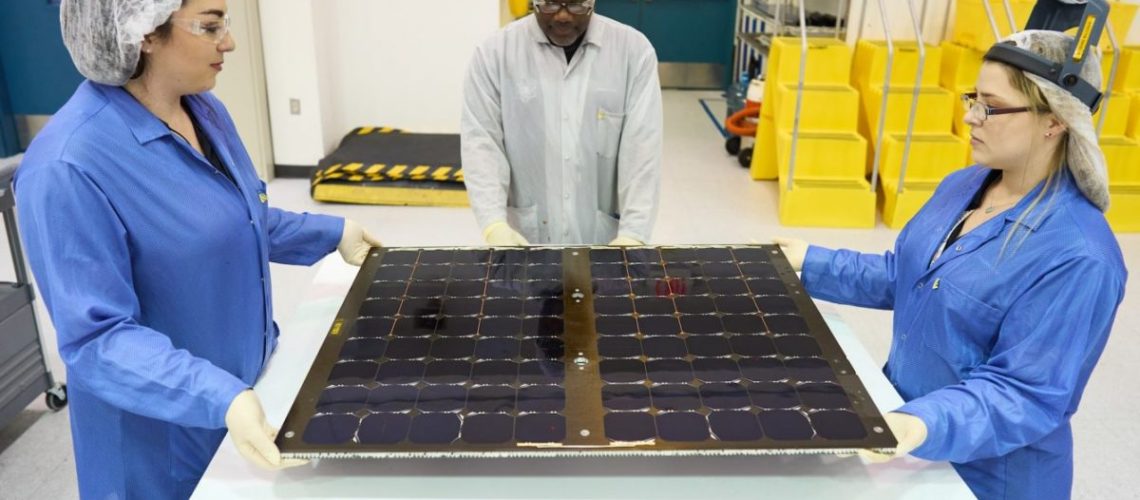The Jet Propulsion Laboratory will use Rocket Labs PV to power mobile robots as part of its Cooperative Autonomous Distributed Robotic Explorers (CADRE) program.
Rocket Lab USA announced it has been selected by the National Aeronautics and Space Administration (NASA) to supply solar panels for the Cooperative Autonomous Distributed Robotic Explorers (CADRE) program. The mission will send shoebox-sized mobile robots to study unexplored regions of the Moon, difficult to reach locations in Mars, and other distant plants.
The PV panels will use Rocket Labs inverted metamorphic multi-junction (IMM) solar cells. The cells are more efficient and lighter-weight than standard multi-junction space solar cells, said Rocket Labs. IMM solar cells are a space-grade technology with class-leading efficiency and 40% lower mass than typical space-grade solar cells.
The shoebox-sized mobile robots used for the CADRE mission are a new generation of NASA’s Pop-Up Flat Folding Explorer Robots (A-PUFFER) technology. CADRE is targeted to fly as a technology demonstration on a commercial robotic lander within the next five years through NASA’s Commercial Lunar Payload Services Initiative.
“We’re incredibly proud to be supporting innovative new means of space exploration,” said Brad Clevenger, Rocket Lab’s vice president of space systems. “The CADRE program could help map unexplored regions on the Moon and access hard to reach parts of Mars, expanding our understanding of distant planets and Moon.”

SolAero Technologies developed the IMM cells, and the company was acquired by Rocket Labs earlier this year. The cells are also being used in the GAzelle spacecraft developed by General Atomics, which launched its 31st mission recently.
Over 4 MW of SolAero cells have been developed to-date, with over 1,000 satellites in orbit currently using their PV to operate, and another 415 satellites planned to launch with SolAero technology. The company’s cells can achieve up to 33.3% efficiency.
Solar in space
Last December, NASA launched the James Webb Space Telescope, the most powerful telescope ever operated. The telescope was launched on Christmas day, and thirty minutes later, Webb’s fold-out solar array deployed and activated.
Webb is set to study phenomena like the formation of planets, and the age and extent of the universe, and it uses less power than one might think. In fact, only one kilowatt, equivalent to the power use of microwaving your lunch, is needed to power the device. Webb will stay energy-efficient more than 1 million miles from Earth, said NASA.
The 20-foot solar array is attached to the main observatory of the craft. It will act as the ‘powerhouse’ for the telescope, supplying energy to all its scientific instruments, communications, and propulsion systems. Though the telescope only needs 1 kW to perform, the array generates twice that much to factor in the degradation caused by the harsh conditions of space.
This August, NASA launched a tennis-court sized craft, sending it on a 1.5-billion-mile journey to the asteroid Psyche, which the craft shares its name with. The Psyche craft is winged with two large cross-shaped solar arrays, which power the craft’s measurement devices as well as its propulsion system.

Each array is 37.1 feet long and 24 feet wide when fully deployed. About an hour after launch, the arrays deployed sequentially, first with the center column unfolding, and then the two cross-panels unfurling and latching into place. One wing at a time, the total deployment takes about seven and a half minutes.
This is the largest solar array deployed by the Jet Propulsion Laboratory, said NASA. So large, in fact, that the entire craft could not be unfolded during the test at Arizona State University’s lab in Tempe. ASU has partnered with NASA on this mission, which will observe the suspected unusually high amount of metals in the thickest band of the asteroid.
On Earth, the solar array can generate about 21kW of electricity, but far away from the sun alongside Psyche, they will only produce 2kW, about the same energy demand as a hair dryer. Despite this low amount of energy, it will be sufficient to power the planned three-and-a-half-year journey to the asteroid, and the two years of orbiting and observation of the body. Psyche spacecraft may make first contact with the Psyche asteroid in 2026.



